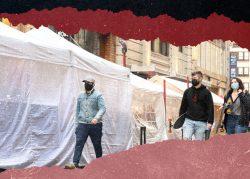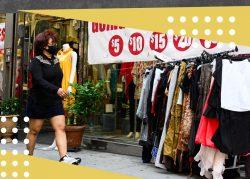Retailers whose shops are located within the New York City subway have returned to one question since the pandemic hit: “How do we survive?”
Since March, 77 of the 321 retail businesses that operate underground have permanently closed, the New York Times reported.
“We don’t have tourists, people are all working from home. We have nothing,” Jairo Cardenas, whose shoe shine business is within the sprawling Times Square station, told the Times.
Restaurants and retails have been struggling during the pandemic, with capacity rules and fears of contracting the virus keeping customers away. For subway retailers, that’s compounded by fewer people using mass transit: Ridership cratered after the pandemic hit in March, and as of early November, it’s still down 70 percent below normal 2019 levels.
Read more



Stores located within subway stations face additional challenges as they can’t take advantage of the de Blasio administration’s recently announced open storefronts initiative, which will allow shop owners to set up tables or kiosks on the sidewalk outside of their stores. Businesses must have outdoor space available to be eligible.
Even iconic businesses aren’t immune: At the Grand Central Oyster Bar, diners traveling through Grand Central Terminal once packed the century-old restaurant. But within two weeks of reopening after indoor dining was permitted, foot traffic dwindled, causing the restaurant to shut down.
“It’s just not sustainable,” Sandy Ingber, the executive chef and a co-owner, told the Times. “Until we have more foot traffic in Grand Central we just can’t do it.”
[NYT] — Sasha Jones
